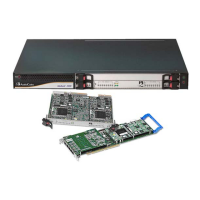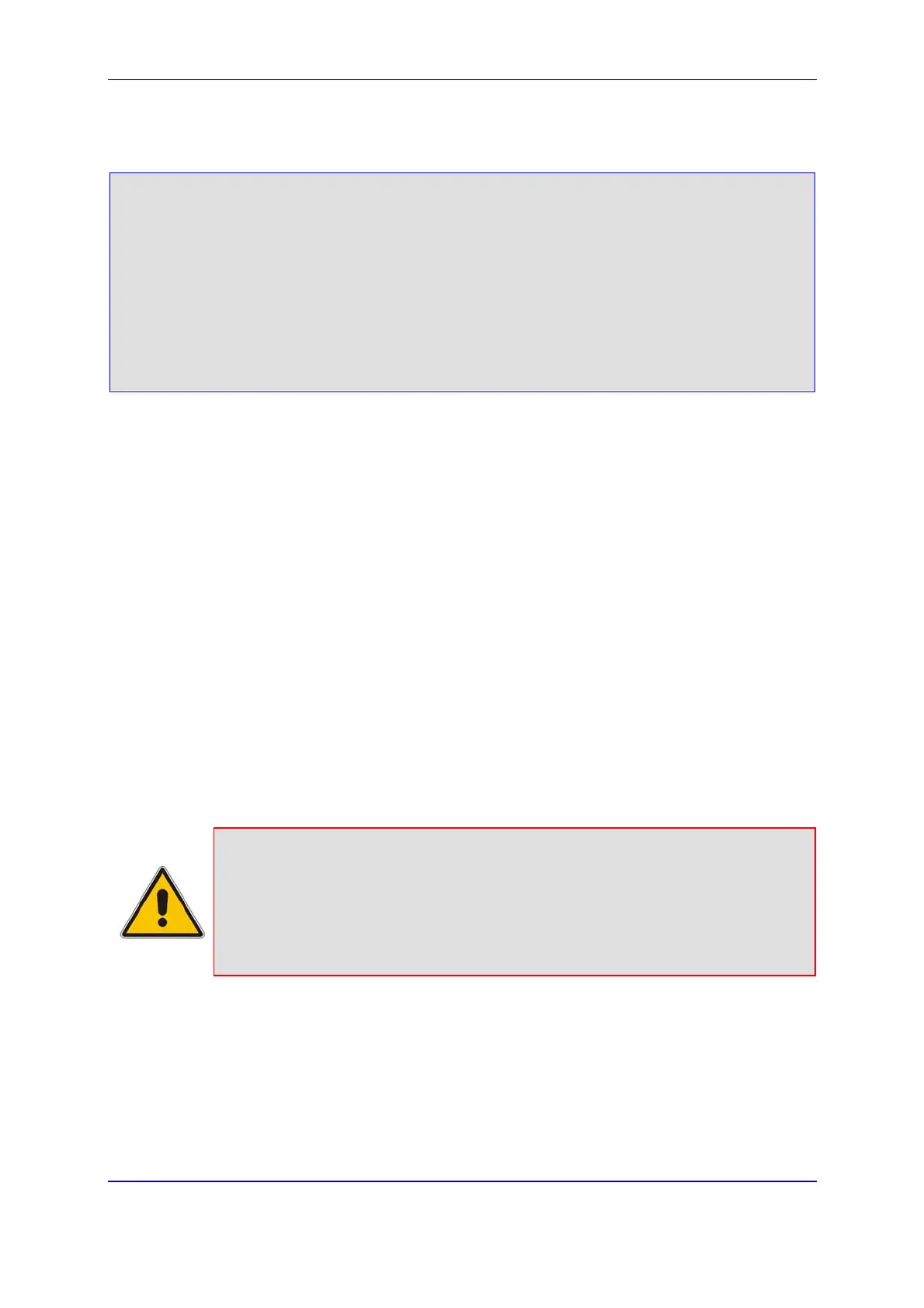Version 5.2 389 September 2007
SIP User's Manual 9. Advanced PSTN Configuration
If there is no NFAS Backup trunk, the following configuration should be used:
ISDNNFASInterfaceID_0 = 0
ISDNNFASInterfaceID_1 = 2
ISDNNFASInterfaceID_2 = 3
ISDNNFASInterfaceID_3 = 4
ISDNIBehavior = 512 ;This parameter should be added because of
;ISDNNFASInterfaceID coniguration above
NFASGroupNumber_0 = 1
NFASGroupNumber_1 = 1
NFASGroupNumber_2 = 1
NFASGroupNumber_3 = 1
DchConfig_0 = 0 ;Primary T1 trunk
DchConfig_1 = 2 ;B-Channel NFAS trunk
DchConfig_2 = 2 ;B-Channel NFAS trunk
DchConfig_3 = 2 ;B-channel NFAS trunk
9.4.3 Creating an NFAS-Related Trunk Configuration On-The-Fly
The procedures for creating and deleting an NFAS group on-the-fly must be performed in
the correct order, as described below.
¾ To create an NFAS Group, take these 3 steps:
1. If there’s a backup (‘secondary’) trunk for this group, it must be configured first.
2. Configure the primary trunk before configuring any NFAS (‘slave’) trunk.
3. Configure NFAS (‘slave’) trunks.
¾ To stop / delete an NFAS Group, take these 3 steps:
1. Stop / delete all NFAS (‘slave’) trunks.
2. Stop / delete the backup trunk if a backup trunk exists.
3. Stop / delete the primary trunk.
Notes:
• All trunks in the group must be configured with the same values for trunk
parameters TerminationSide, ProtocolType, FramingMethod, and
LineCode.
• After stopping or deleting the backup trunk, delete the group and then
reconfigure it.

